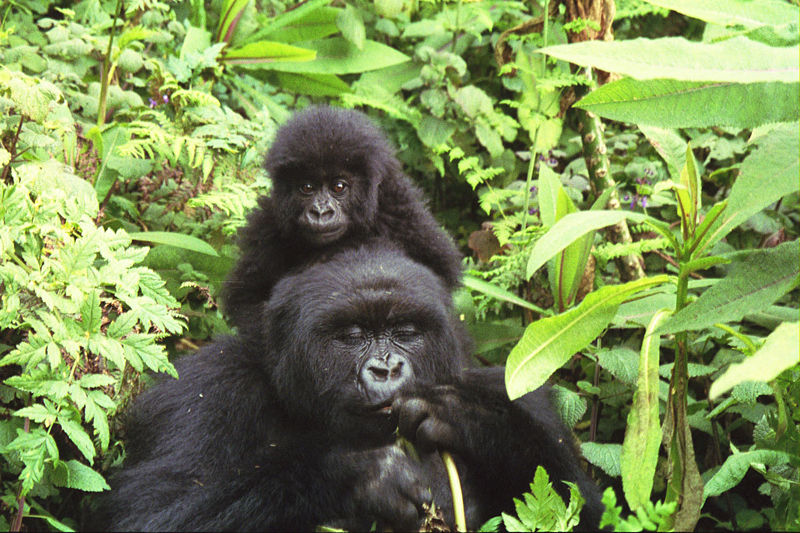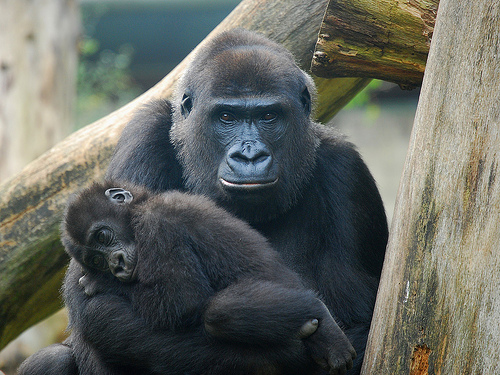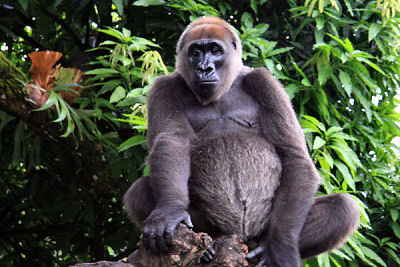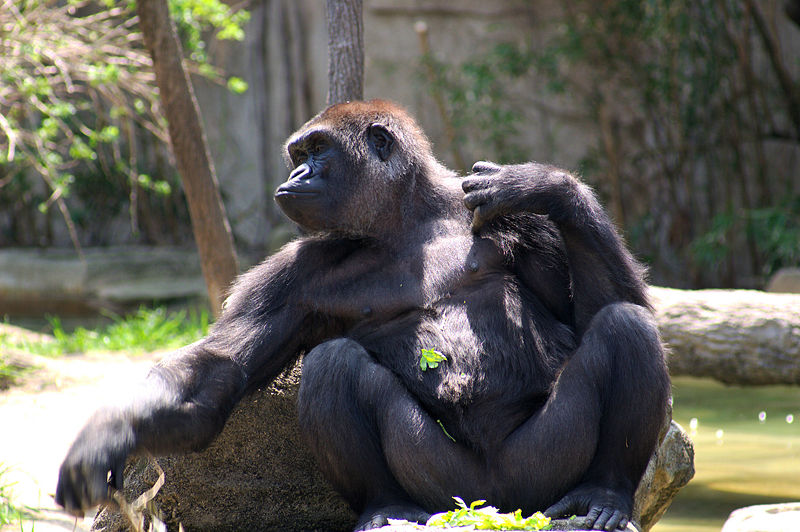A
Question of Species...


The photo to
the left shows a female Western Lowland Gorilla (G. gorilla) and her
infant. For comparison, the photo to the right shows a female Mountain
Gorilla (G. beringei) and her infant.
Gorilla
gorilla is the smaller of the two species in the genus Gorilla. It has
short hair, which is more gray than the long, black hair of Gorilla
beringei.
The Western Gorilla has a patch of brown hair on the tops of its head.
Both species' bodies are stocky and their forearms are considerably
longer than their upper arms. The hands and feet of the Western Gorilla
are larger and its arms are longer than those of the
eastern species. Facially the two species differ in the fact that
Western Gorilla has a lower forehead, shorter palate, and slightly
smaller nostrils. G.
gorilla is found in areas of west-central Africa, while G. beringei is
found at least 650 miles away in patches east-central Africa. 3,6,7,8
Learn more about the habitat
of the Western Gorilla here.
G.
gorilla and G. beringei were not considered separate species until a
few years ago. Even then, it was unknown how the two species evolved
from a common ancestor. In 2007, the results of a study were revealed
in which large amounts of non-coding nuclear DNA from 18 gorillas were
sequenced. This led to the discovery that the two species originally
separated about one million years ago, but continued to breed with each
other in small amounts for at least 770,000 years, gradually moving
farther apart geographically and genetically. 6
Gorillas
are sexually dimorphic. Female Western Gorillas weigh between 150 and
250 pounds; they usually measure about 5 feet tall when standing
bipedally and 3.5 to 4 feet tall when standing in their normal
quadrupedal position. In contrast, males stand approximately
5.5 feet tall upright and 4.5 feet tall normally, and they weigh
anywhere from 300 to 500 pounds. Light, silvery hair spreads over the
backs and upper thighs of males as they mature, earning them the name
"silverbacks." Mature males also develop a more prominent crest down
the center of their skull. 3,7,8 Learn
more about the Western Gorilla's body
here.


The photo on
the left shows a Cross River Gorilla (G. g. diehli) in Cameroon, while
the photo on the right shows a Western Lowland Gorilla in a zoo in the
United States.
G.
gorilla has two subspecies, G.
g. gorilla, commonly called the Western Lowland Gorilla,
and G. g. diehli,
also known as the Cross River Gorilla. The latter subspecies was only
very recently identified. This is due to its very limited population
and habitat; only 250 to 300 individual Cross River Gorillas exist, all
within an isolated area of forest spanning 290 square miles in
western Cameroon and south-eastern Nigeria. Consequently, little
information is yet available about G. g. diehli
in comparison to G.
g. gorilla, which is estimated to have a population
numbering about 100,000 in the wild. (However, many serious threats are rapidly decreasing
its numbers.) The two subspecies have certain variations
between their respective tooth and skull measurements, resulting in
slightly different facial structures. Western Lowland Gorillas are the
only members of the genus Gorilla
found in U.S. zoos. 3,8
--------------------------------------------------------------------------------------------------------------------------------------------------------------------------------------------------------------------------------------------------------------------------
Question
or Comments? Feel free to contact me at wussow.arik@students.uwlax.edu.
Site
designed by Arika Wussow, Last updated April 2008.
MultipleOrganisms.net
University
of
Wisconsin-La Crosse



